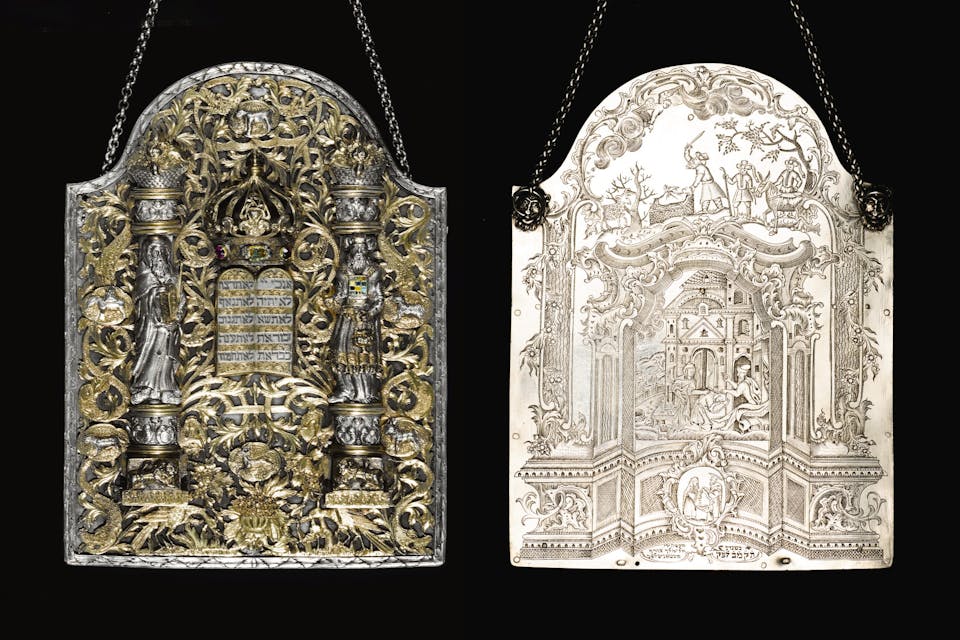
February 10, 2021
The Mystery of the Sassoon Torah Shields
A set of Torah shields recently exhibited by Sotheby's isn't just beautiful—it also contains a hidden biblical portrait of the court Jew's inner conflict.
Once in a great while Jewish visual culture rises to great heights, often to flicker brilliantly and then subside in the winds of societal change. We are privileged to witness the products of one such efflorescence at “Sassoon: A Golden Legacy,” a Sotheby’s exhibition and auction this past December that presented a wide range of Jewish artifacts collected by the Sassoons, a family of Jewish traders and financiers based in Iraq, India, and China who came to be known as “the Rothschilds of the East.” Two of those artifacts in particular show a combination of artistic mastery, talmudic and biblical scholarship, and abundant capital the likes of which we have rarely seen. What’s more, the stories portrayed on them present a minor mystery, one that when looked at from the right angle resolves into a remarkable portrait of the man who ordered them into being.
In late-18th-century Galicia, an unknown patron, possibly named Isaac, commissioned from an artisan named Elimelech Tzoref the creation of three silver Torah shields. Tzoref (a surname derived from the Hebrew for gold and silversmiths) was a highly skilled goldsmith likely working in Lviv, Ukraine, a city then known as Lemberg. His skill and intelligence created objects that represent a singular moment of Jewish craftsmanship, creating, in the words of Sharon Liberman Mintz, Sotheby’s senior Judaica consultant, “three of the finest Torah shields in existence today.”
These three shields, remarkably similar and yet distinct, were subsequently collected by the Sassoon family sometime before 1887, when they were lent to the 1887 Anglo-Jewish Historical Exhibition at the Royal Albert Hall in London. One, signed and dated in Hebrew, sold at the December Sotheby’s auction for the staggering price of $1,350,000 to the Boston Museum of Fine Arts. At the same sale, the second Torah shield sold for $685,500 to a private collector; the third shield had previously sold in 2000 at Sotheby’s Tel Aviv for the then-record price of almost $800,000. (In 2010 it was subsequently donated to the Israel Museum.) Taken together, the three shields represent an intriguing essay in Jewish visual creativity where the public face of an artwork—the gold and silver front surface—serves intentionally to hide a very private narrative on the back, here comprising a finely engraved Torah illustration complemented by some diagrams of the Holy Temple in Jerusalem. It is this highly unusual dialogue between the front and backs that captures our imagination.